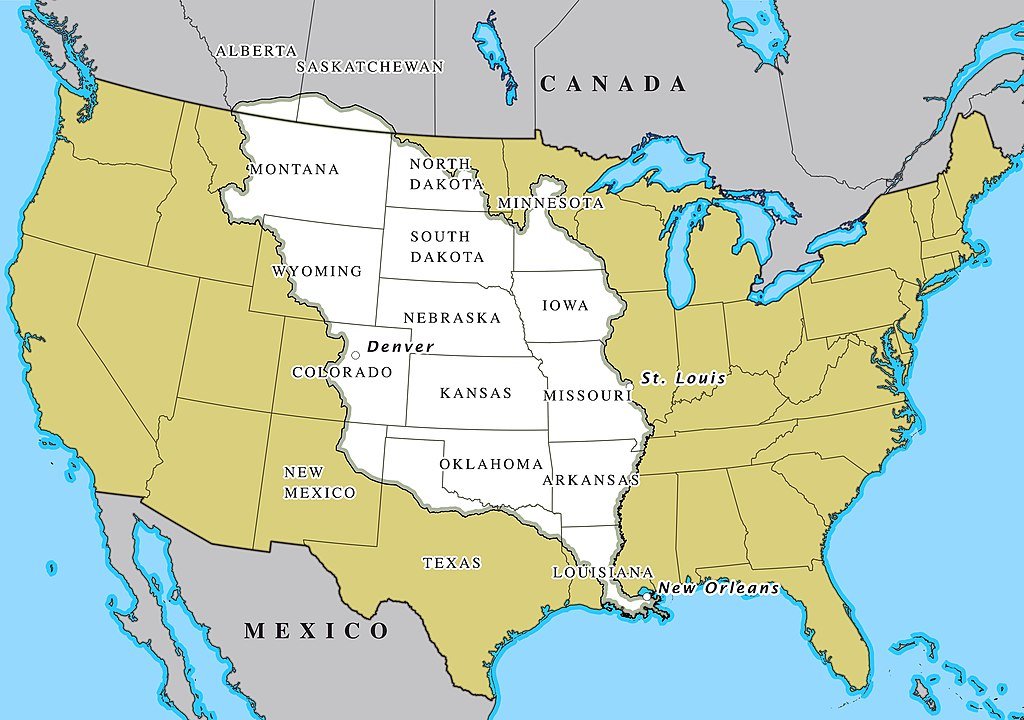Thomas Jefferson, the third President of the United States, played a pivotal role in one of the most famous and consequential explorations in American history – the Lewis and Clark Expedition. This expedition, also known as the Corps of Discovery, was commissioned by Jefferson in 1803 with the goal of exploring and mapping the newly acquired Louisiana Territory and finding a practical route to the Pacific Ocean. Led by Meriwether Lewis and William Clark, the expedition lasted from 1804 to 1806 and covered over 8,000 miles of uncharted territory, leaving a lasting impact on American history and geography.
Richard Bluttal explains.
Thomas Jefferson in later life. Portrait by Thomas Sully.
Thomas Jefferson's interest in the exploration of the American West can be traced back to his early years as a young surveyor and land speculator in Virginia. He understood the strategic importance of expanding American territory westward and believed in the potential for economic growth and scientific discovery in the vast wilderness beyond the Mississippi River. Jefferson's vision for the future of the United States included a nation that stretched from coast to coast, with access to valuable resources and trade routes.
In 1803, Jefferson seized the opportunity to expand the nation's territory when he negotiated the Louisiana Purchase with France, effectively doubling the size of the United States overnight. The acquisition of the Louisiana Territory presented Jefferson with a unique opportunity to explore and map the uncharted lands west of the Mississippi River, which inspired him to commission the Lewis and Clark Expedition.
Meriwether Lewis, a trusted confidant of Jefferson, was chosen to lead the expedition due to his background in the military and his experience as Jefferson's personal secretary. Lewis, in turn, selected William Clark, a seasoned frontiersman and skilled mapmaker, to serve as his co-leader. Together, Lewis and Clark assembled a diverse team of soldiers, interpreters, hunters, and tradesmen to accompany them on their journey into the unknown.
Expedition begins
The Lewis and Clark expedition began in St. Louis, Missouri, where the Corps of Discovery set out on their journey up the Missouri River. The expedition consisted of a diverse group of individuals, including soldiers, boatmen, interpreters, and hunters, as well as Sacagawea, a Shoshone woman who served as a guide and interpreter. Throughout their journey, Lewis and Clark meticulously documented their observations and discoveries, keeping detailed journals that provided valuable insights into the natural and cultural landscape of the American West.
One of the most significant achievements of the Lewis and Clark expedition was the successful establishment of diplomatic relations with Native American tribes along their route. The expedition encountered numerous Native American groups, including the Mandan, Hidatsa, and Shoshone, and engaged in trade and diplomacy with them. Sacagawea's presence was particularly valuable in facilitating communication with the Shoshone tribe, as she was able to interpret and negotiate on behalf of the expedition.
Challenges
Lewis and Clark faced a myriad of challenges during their historic exploration of the uncharted American West. Venturing into unknown territory presented numerous obstacles that tested the resilience and resourcefulness of the Corps of Discovery. Some of the key challenges they encountered included:
1. Geographic obstacles: The American West was characterized by rugged terrain, dense forests, and wide rivers, making travel difficult and slow. The expedition had to navigate through mountain ranges, cross rivers, and traverse dense forests, often without clear paths or landmarks to guide them.
2. Harsh weather conditions: The expedition faced extreme weather conditions, including scorching heat in the summer and freezing temperatures in the winter. The unpredictable weather made travel challenging and required the expedition to adapt to changing conditions.
3. Limited supplies: The expedition had to contend with limited supplies of food, water, and ammunition, which had to be carefully rationed to ensure the survival of the group. Hunting, fishing, and foraging became essential tasks to supplement their provisions.
4. Encounters with Native American tribes: The expedition encountered numerous Native American tribes along their route, some of whom were initially hostile to the explorers. Communication barriers, cultural differences, and misunderstandings often led to tense interactions, requiring diplomacy and negotiation to maintain peace.
5. Sickness and injuries: Members of the expedition fell ill due to exposure, fatigue, and poor sanitation, with some suffering from injuries sustained during their journey. Medical supplies were limited, and the expedition had to rely on the expertise of their physician, Dr. John Potts, to treat illnesses and injuries.
6. Mapping and navigation: The expedition had to create accurate maps of the region as they traveled through uncharted territory. Lewis and Clark relied on rudimentary instruments, such as compasses and sextants, to determine their position and chart their course, a challenging task in the vast and unfamiliar landscape of the American West.
The expedition also made important scientific discoveries, documenting and collecting specimens of previously unknown plants and animals. The expedition's naturalists, including Meriwether Lewis and William Clark themselves, collected samples of flora and fauna, providing valuable information about the biodiversity of the American West. The expedition also mapped the geography of the region, creating detailed maps that would later be used by settlers and explorers.
Expedition ends
The Lewis and Clark expedition persevered and successfully reached the Pacific Ocean in November 1805. The expedition spent the winter at Fort Clatsop in present-day Oregon before beginning their journey back to St. Louis in the spring of 1806. Along the way, they retraced their steps and encountered new challenges, but ultimately returned to St. Louis in September 1806, completing their historic journey.
Enjoy that piece? If so, join us for free by clicking here.









